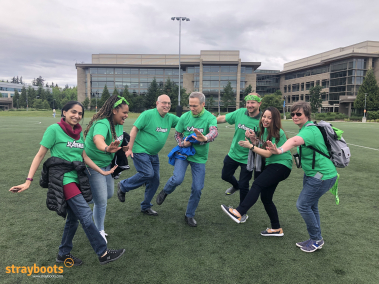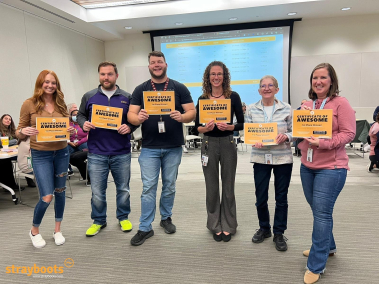In an increasingly globalized world, workplaces are becoming more diverse and multicultural. While this diversity brings a wealth of new perspectives and ideas, it also challenges overcoming cultural barriers. Team building in such an environment requires a thoughtful approach that acknowledges and celebrates differences while fostering a sense of unity and collaboration. Let’s explore how you can navigate these waters – turning potential obstacles into opportunities for growth and innovation!
The foundation of effective team building in a multicultural environment is acknowledging and embracing the diversity of your team. Each member brings their unique background, experiences, and viewpoints to the table. Recognizing and valuing these differences is crucial in creating an inclusive atmosphere where everyone feels valued and heard.
Navigating the Multicultural Workplace: A Learning Journey
Entering a multicultural workplace can be an exciting adventure for students and young professionals. It’s like stepping into a world filled with diverse perspectives and opportunities. Sometimes, the challenge of balancing work with other responsibilities might lead you to think, “Is there someone who can write my papers?” This question reflects the pressure of managing academic and work commitments simultaneously. But remember, your multicultural environment is more than just a workplace. It’s a vibrant community where learning and personal growth happen every day, offering valuable experiences that go beyond the usual tasks and projects.”
Understanding Cultural Barriers: More Than Just Language
Cultural barriers extend beyond language differences. They encompass communication styles, work ethics, attitudes towards hierarchy, and conflict resolution approaches.
Understanding these nuances is key to fostering a harmonious and productive team environment. It’s about learning how to work alongside each other and how to work with each other, leveraging the strengths that each culture brings to the table.

Building Bridges: Communication is Key
Effective communication is the cornerstone of any successful team, and in a multicultural setting, it becomes even more crucial. Encouraging open, respectful dialogue and actively listening to each other’s perspectives can bridge gaps and foster mutual understanding.
Tools like translation apps or cultural sensitivity training can also play a pivotal role in facilitating clearer communication.
Celebrating Differences: Team Building Activities
Team building activities are a great way to unite members and celebrate the rich tapestry of cultures within your team. Activities that focus on sharing cultural traditions, cuisines, or stories can be enlightening and fun, helping team members see beyond the workplace and connect on a more personal level.
Fostering Inclusion: Policies and Practices
Creating an inclusive environment goes beyond occasional team-building activities. It involves implementing policies and practices that support diversity and inclusion.
This could mean flexible working hours to accommodate different time zones, providing cultural competency training, or establishing forums where team members can voice concerns and share experiences.

Leveraging Diversity: A Source of Innovation
A multicultural team is a breeding ground for innovation. Different perspectives can lead to more creative problem-solving and out-of-the-box thinking. Encouraging team members to bring their cultural insights to the table can lead to unique solutions that a more homogenous team might not have considered.
Overcoming Misunderstandings: Conflict Resolution
Misunderstandings are inevitable in any team, and they can be more frequent in a multicultural setting. Handling these conflicts with sensitivity and an open mind is crucial. Approaches to conflict resolution may vary across cultures, and understanding these differences can help find common ground and resolve issues amicably.
Understanding and appreciating cultural diversity is a continuous journey. Encourage your team to continuously learn about different cultures through books, films, workshops, or interactions! The more you know, the more you understand, and the stronger your team becomes.
The Role of Leadership: Guiding the Ship
Leadership plays a pivotal role in fostering a multicultural team environment. Leaders must be role models, showcasing cultural sensitivity, open-mindedness, and inclusivity. Their attitude can set the tone for the entire team, turning diversity from a challenge into a celebrated strength.
While it’s important to acknowledge cultural backgrounds, it’s equally important to see each team member as an individual beyond their cultural identity. Recognizing each person’s unique talents, skills, and contributions fosters a sense of individual value and belonging within the team.

Celebrating Cultural Milestones Together
Celebrating cultural festivals, holidays, and milestones together can significantly strengthen team bonds. It’s an opportunity for team members to share a part of their heritage and for others to learn and show respect for different cultures.
These celebrations can be simple gestures like sharing a traditional dish, organizing a cultural dress day, or even a small get-together to acknowledge an important cultural event.
Encouraging Peer Learning and Mentorship
Peer learning and mentorship can be powerful tools in a multicultural team. Encouraging team members to teach each other about their cultures, languages, or professional skills can foster a learning environment that values sharing and growth.
Mentorship, especially from more experienced team members, can provide guidance, support, and a sense of belonging to newer or younger members.
Final Thoughts
Building a team in a multicultural environment is an enriching experience that offers a mosaic of perspectives, ideas, and opportunities for growth. It’s about creating a space where cultural barriers are transformed into bridges of understanding and collaboration.
As you navigate this diverse landscape, remember that each step, each conversation, and each shared moment contributes to a stronger, more united team. In this global village, your multicultural team is not just a group of individuals working together; it’s a microcosm of the world, reflecting the beauty of diversity, the power of unity, and the endless potential of what we can achieve together.



